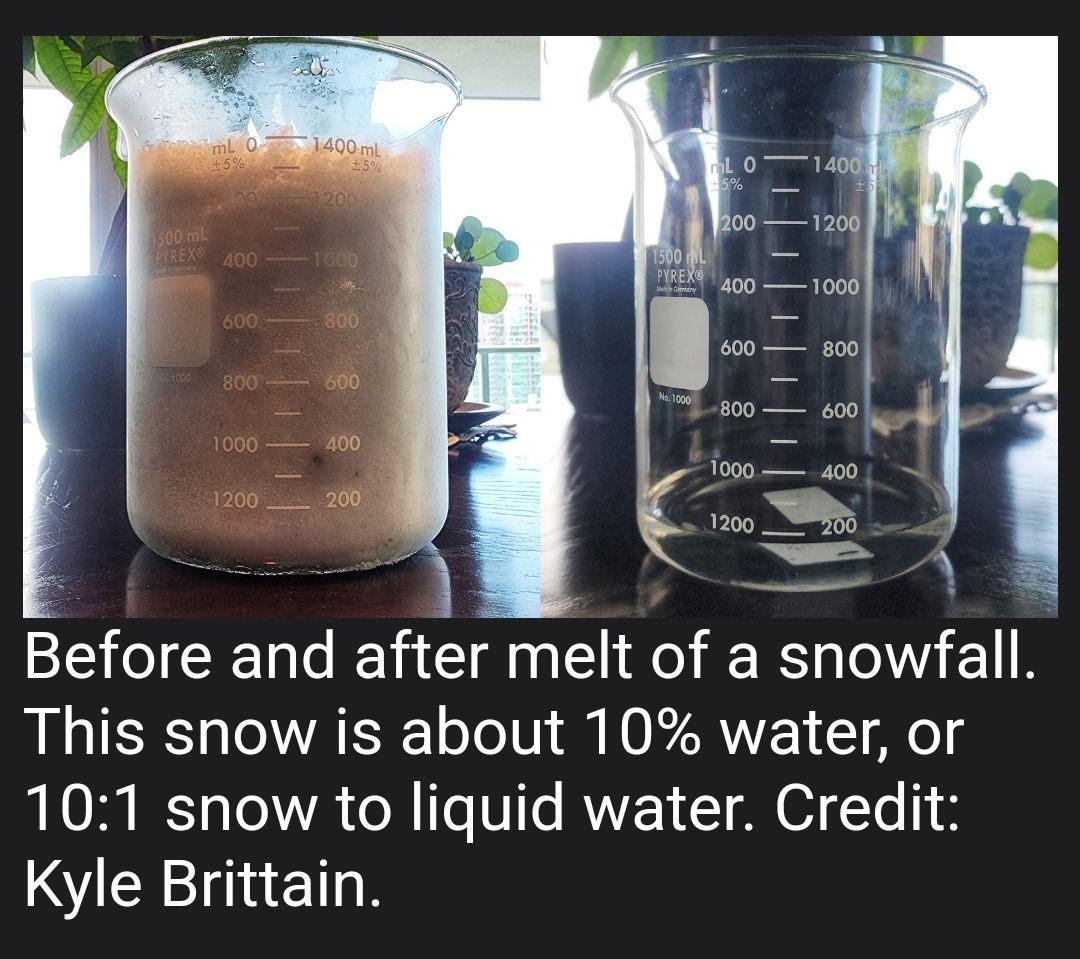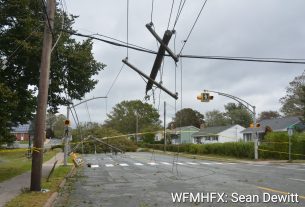**** Info via Environment Canada
How much water is in snow?
A metre of snow is a lot. But if you melted it all down, how much water would remain? The answer depends on the snow water equivalent, and it can be surprisingly small!
What is snow water equivalent?
The snow water equivalent is the ratio of snow to liquid water in a given volume of snow. Often, falling snow consists of about 10% water, meaning that 10 cm of uncompacted snow melts down to 1 cm of water. In other cases, however, snow contains even less water.

If you’ve spent much time shovelling snow off the driveway, you will be familiar with this concept. Sometimes, ankle-deep snow feels like pushing feathers around, while other times it feels like trying to lift wet concrete!
The difference comes down to how much air is trapped within the snow. Several factors influence this, including:
- The type of snow crystals falling
- Wind speed
- The air temperature (which plays the biggest role)
In milder, moist conditions near 0°C, snowflakes contain more water and pack together more densely, making the snow heavier. But in colder conditions, snow is drier, fluffier, and piles up more easily. As a result:
➡️ 10 cm of snow in milder conditions, will typically melt down to 1 cm of water.
➡️ 25 cm (or more) of fluffy, dry snow may be needed to produce the same amount of water.
Snow water equivalent across Canada
Canada’s vast landscape, with varying climates from coast to coast to coast – means that snow water equivalent varies widely across regions. Snow makes up about one third of the country’s annual precipitation, but this percentage differs by location. On average:
- 50% or more of annual precipitation falls as snow in the North.
- 25% in the Prairies.
- As little as 5% on the west coast, parts of the east coast, and in parts of southern Ontario.
Snow as “water insurance”
In many areas of Canada, snow is a critical source of water storage, acting as “insurance” for the warmer months when demand is at its highest. On the Prairies, agricultural activities benefit from the spring snowmelt that replenishes soil moisture, dugouts and streams. In the mountains of British Columbia and Alberta, the melting snowpack replenishes streams and reservoirs, supplying water for hydroelectric power, irrigation, industry, and municipal use. When winter snow is scarce in these areas, summer water shortages can follow.
While a single snow event may not hold much water, it can really begin to add up over the winter, providing critical, slow-release water for later times. So, let the flakes fly!
–




